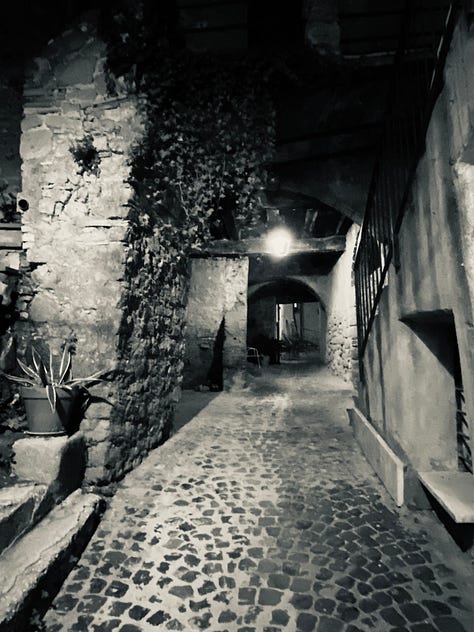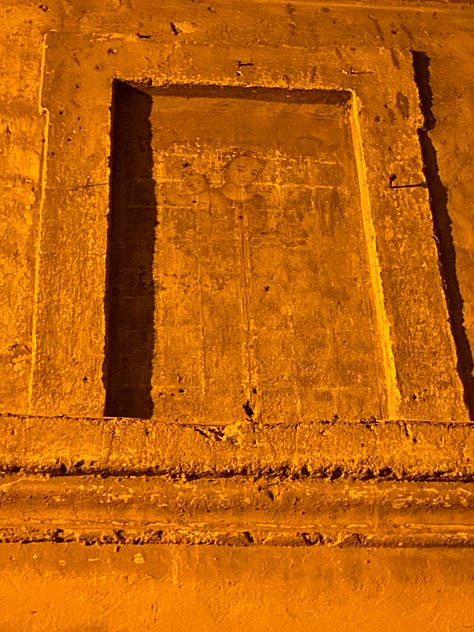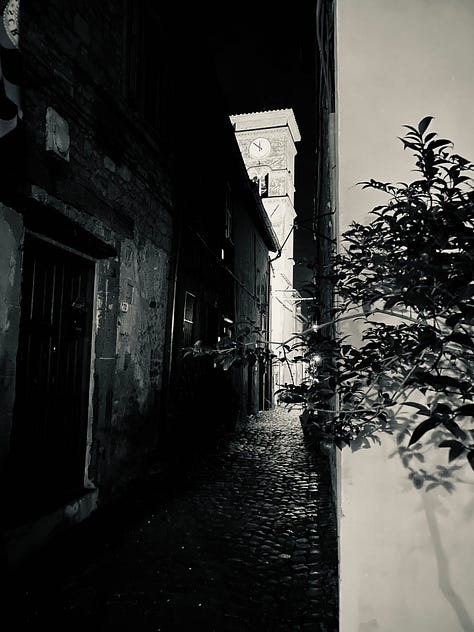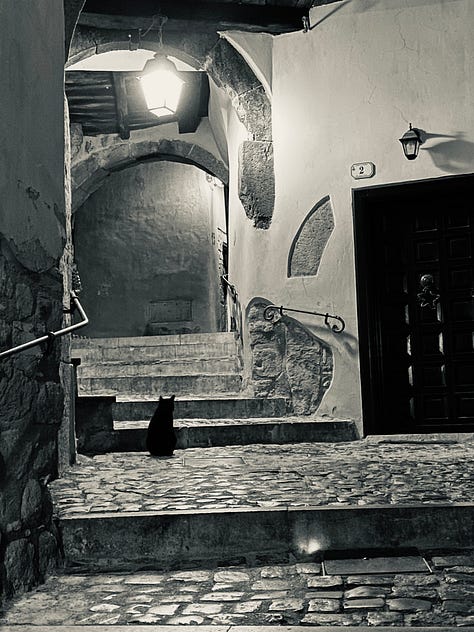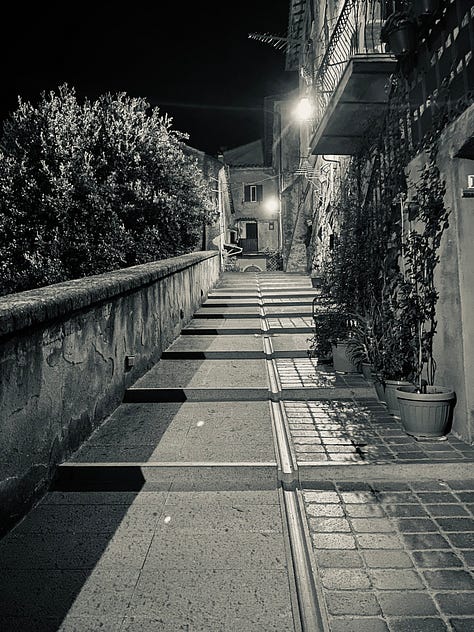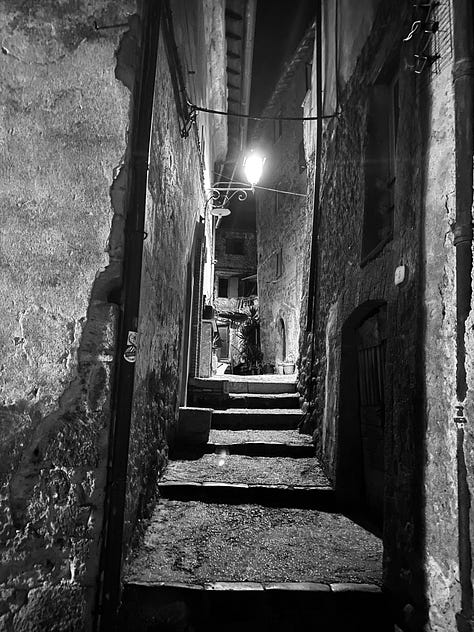Today we look at a legend from the town of Sacrofano, once known as “Scrofano,” just north of Rome.
In the early 1600s, a Francesco Orsini, of the Duchy of Bracciano, married the Marchioness Giovanna Frangipane della Tolfa, not for love but for the ambition of land and rule.
She was perhaps not the fairest of them all.
The groom, before riding off to battle with the rival Colonna family, took Giovanna to the Castle of Scrofano, where she was given into the care of the castellans. She could do whatever she pleased…except leave the castle.
Giovanna waited, her patience as vast as the silence in her new stone prison. Even when news came of Orsini's triumph, her heart saw no sign of his return. In time, the truth spilled from the castellan's lips—she was but a means to an end, her lands a trophy, her presence a shadow. So, she donned mourning garb and took to nightly walks veiled in black, seeking solace in Scrofano's whispering streets.
It was then she heard a prisoner's cry, a young man wronged and doomed. Her heart, fierce as her lineage, vowed justice for the innocent. But dawn's light brought naught but sorrow; the young man was gone, the promise unfulfilled. In her grief, she commissioned a painter to capture her visage—Madonnella behind bars, not of divinity but of mortal plight, a reflection of her own imprisoned spirit.
The Lady's life ebbed away, her memory fading into the crypts of San Giovanni. Yet whispers grew as dusk fell on Scrofano, of a spectral woman in black, vanishing into the night. "Beware, children," the old would say, "lest the Lady's soul ensnares you in her eternal walk."
Her fresco, a somber sentinel, still watches from the Castle's high stairwell, awaiting a touch of grace to return it to the eyes of the world.
